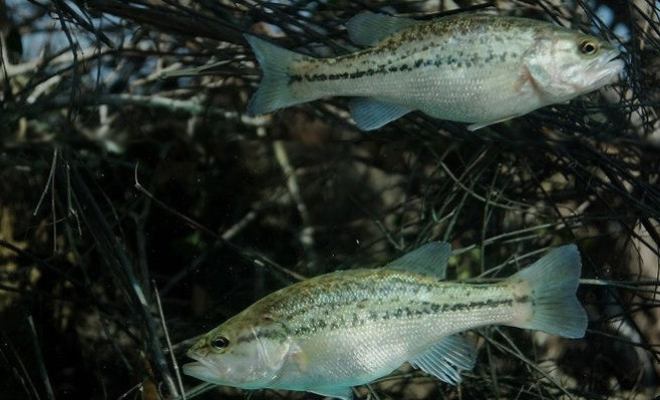Many pond and lake owners are troubled with muddy, murky, and all-around gross-looking water. You know the look—it’s dirty, it’s difficult to catch the fish you KNOW you stocked, and the kids don’t want to swim in it during the summer. Though murky water can have many causes, the primary reason for it is the presence of suspended clay particles in the water column. What if we told you that there is an all-natural solution to all of these issues? Gypsum!
I know what you’re thinking, “That sounds great, but what the heck is it?” The answer is alarmingly simple, and the results are outstanding compared to other options. Gypsum is a naturally occurring substance that looks like a fine dirt. When applied to a murky pond or lake, the gypsum clings to suspended clay particles in the water column and drags them down to the bottom, where they stay unless heavily disturbed. Its primary use is to increase the aesthetics of ponds and lakes, but it is also used to buffer pH and decrease odors. Being that gypsum is a completely natural approach to pond or lake improvement, it is an excellent alternative to chemicals that claim to yield the same results.
Pond or lake owners with Largemouth Bass especially benefit from improved water clarity, as Bass (and Crappie!) hunt by sight. If they can’t see your lure, no wonder you haven’t caught that 8-pounder yet! Many shining testimonials from our customers have detailed day-and-night differences in the number of fish caught after applying gypsum. This allows you to manage your fishery better in the sense that you can monitor growth rates and population densities more easily… and schedule that weekend fish fry you’ve been wanting to host.
So, how do you know if your pond needs gypsum? Most people can look at their pond and immediately know if they want to improve clarity. However, in some instances, low visibility can be caused by an outside factor. Livestock activity, undesirable fish (like Common Carp and Buffalo), and excessive waterfowl can all contribute to decreased clarity as well. A great method of testing your water at home would be to fill a glass jar or bucket with the pond water and letting it sit undisturbed for a few days. If it settles out and clears up in the container, odds are the pond is being disturbed by an outside factor. If it is still murky and cloudy after the few days are up, gypsum is your answer!
Determining the amount of gypsum your pond needs varies by situation, so we encourage our customers to either mail in or drop off a water sample at our Hatchery in order for us to make the appropriate dosage determination.
The days of sparkling clear water, awesome catches, and that weekend fish fry are within your reach! As always, we here at Henneke Hatchery are happy to help if you have any questions about the process, pricing, or suggestions. Message or call us today to inquire!
Author: Jordan Moore
